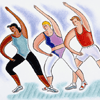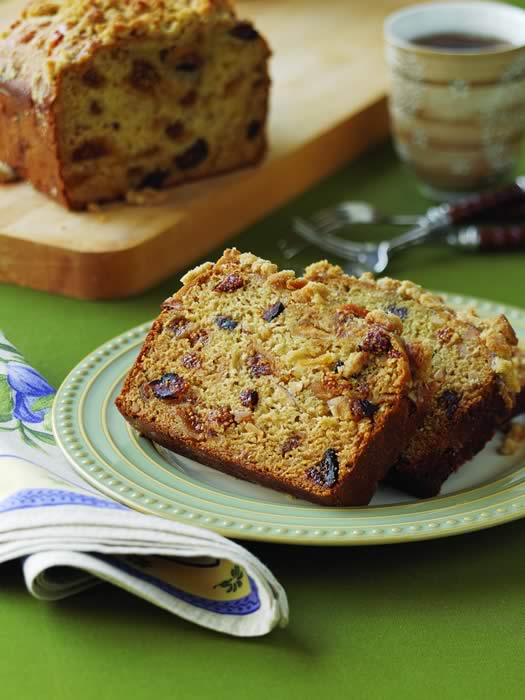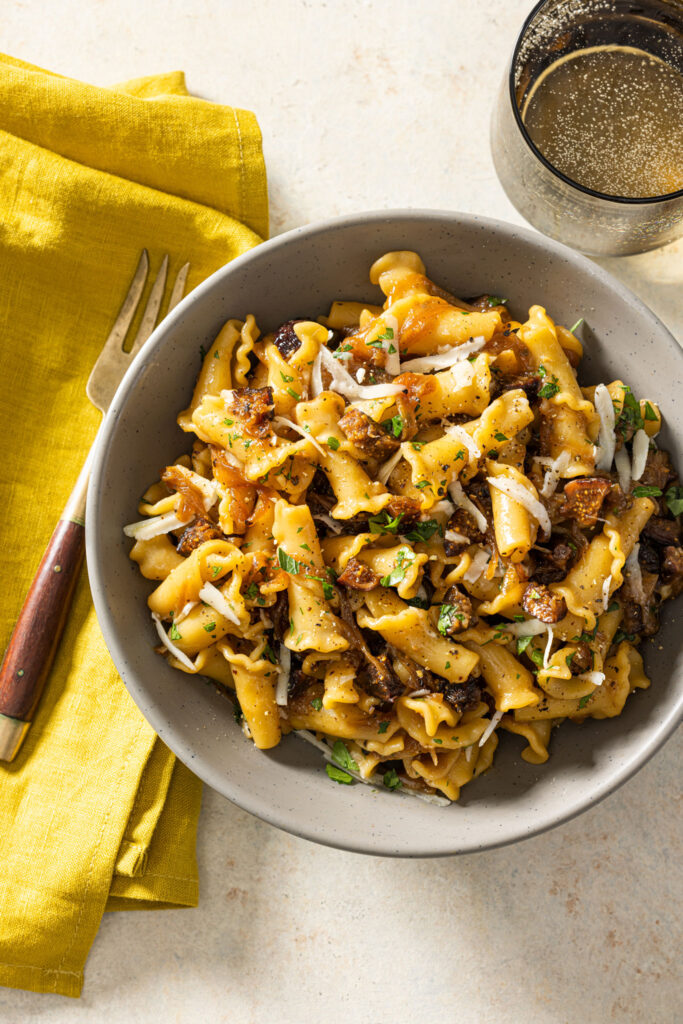Spring Into Fitness
“Exercise is good for you; it provides many health benefits.” You’ve heard this a million times, yet 50 percent of those starting an exercise program quit within the first six months. People have the time to exercise, what appears they don’t have is the motivation and a good plan. Spring brings great weather and creates the perfect beginning for a new fitness plan. Try these tips from the American College of Sports Medicine for incorporating exercise into your daily life and enjoying the outdoors. Remember to include a healthy snack of dried California figs.

Do it in short bouts. Research shows that moderate-intensity physical activity can be accumulated throughout the day in 10-minute bouts, which can be just as effective as exercising for 30 minutes straight. This can be useful when trying to fit physical activity into a busy schedule.
Mix it up. Combine moderate- and vigorous-intensity physical activity. For example, you can walk briskly for 30 minutes twice per week and jog at a higher intensity on two other days.
Set your schedule. Maybe it’s easier for you to walk during your lunch hour, or perhaps hitting the pavement right after dinner is best for you. The key is to set aside specific days and times for exercise, making it just as much a regular part of your schedule as everything else.
Go to the gym or just go outside. It doesn’t take an expensive gym membership to reach the daily recommended amount of physical activity. A pair of athletic shoes and a little motivation are all you need to live a more active, healthier life.
Make it a family affair. Take your spouse, your children, or a friend with you during exercise to add some fun to your routine. This is also a good way to encourage your kids to be physically active and committed early to a lifetime of health.
Everyone can benefit from regular physical activity–no one is too old. For more information on the multitude of benefits of physical activity, visit the Centers for Disease Control and Prevention web site, www.cdc.gov.
On the Nutrition Front
By Cherryl Bell, RD, MS
One Large Meal or Three Small Meals a Day for Better Health?
For years nutrition experts have recommended eating several small meals a day instead of eating one large meal. However, the health consequences of eating one large meal a day compared with eating three meals a day has not been established.
Now two recently published journal articles are among the first to report the effects of meal skipping on key health outcomes, based on a study involving a group of normal-weight, middle-aged adults.
The study analyses, authored by scientists at the Agricultural Research Service (ARS) and the National Institute on Aging (NIA), showed that when the volunteers were “one-mealers,” they had significant increases in total cholesterol, LDL “bad” cholesterol and in blood pressure, compared to when they were “three-mealers.”
Whether you are trying to lose or gain weight or just keep a healthy weight, eating several small meals a day is definitely the way to go. It’s easy to have five small meals a day when dried California figs are in the mix. Mission and Calimyrna figs are so portable and high in fiber. Fiber gives a feeling of fullness and keeps hunger at bay. Take a Mission fig and stuff a toasted almond inside for a healthy on-the-go nutrient dense snack. Or, grab three plump, golden Calimyrna figs, make a small slit in the side and add a squeeze of peanut butter. Better eating for better health.
US Department of Agriculture (2008, March 11). How Frequency Of Meals May Affect Health. ScienceDaily. Retrieved April 4, 2008, from
http://www.sciencedaily.com /releases/2008/03/080307084626.htm

Project M.O.M.—Mothers & Others & MyPyramid—is a multi-pronged initiative by the USDA Center for Nutrition Policy and Promotion (CNPP) aimed at transforming the way the American family eats. It involves government, industry, educators, consumers, and the media.
According to CNPP, there is an increasing concern with the weight and eating habits of America’s children. This is undoubtedly a complicated problem. However, what is often overlooked is the one place where a deliberate, positive trend toward change could take place tonight — in the family home. If we can collectively connect with a family’s “nutritional gatekeeper,” in ways that help the family eat more nutritiously and be more physically active, we could make an immediate change, with lasting impact.
To do this, we need to connect with these nutritional gatekeepers — moms, dads, grandparents, siblings, or other caregivers — to promote good nutrition wherever they make their food decisions. We need to connect where they work and play, and where they purchase and prepare food. This is why the CNPP has launched Project M.O.M. Visit the web site for a menu planner that’s fast, fun, great for the family, and easy to use!
Spring Holiday Recipe Picks
Mother’s Day — May 11
For Mother’s Day this year, treat mom to breakfast in bed. Lemon-Fig Bread with Almond Streusel is so easy the kids can make it with just a little help.
Moist and chewy with a natural sweetness, figs join forces with tangy fresh lemons to deliver an exceptionally flavorful quick bread. Easy to make and versatile, quick breads are wonderful, especially on special holidays. Dried California figs, packed with a wide array of essential nutrients, enhance many quick bread recipes. Coarsely chopped or thinly sliced, dark purple Mission and golden Calimyrna figs can be easily substituted for most dried fruits in bread recipes. One-half to one cup of dried figs also makes a great addition to banana bread and other fruit and nut breads.
Lemon-Fig Bread with Almond Streusel calls for soaking Mission and Calimyrna figs and incorporating the flavorful liquid into the batter. The result is a fruity, moist, dense bread bursting with sweet fig flavor. Serve slices of Lemon Fig Bread lightly toasted for breakfast or topped with a small scoop of lemon sorbet for dessert.
New to making quick breads? Here are a few tips.
- Read through the recipe before you start and organize your ingredients
- Combine dry ingredients in a separate bowl
- Add liquid ingredients to dry ingredients
- Don’t overmix
- Chop figs with a knife lightly sprayed with nonstick cooking spray to reduce sticking
- Keep loaves of quick bread in airtight wrap or container; will keep for several days at room temperature
- Freeze extra loaves
Lemon-Fig Bread with Almond Streusel
- 1 1/2 cups Orchard Choice or Sun-Maid Figs, stemmed and chopped
- 1 cup boiling water
- 6 tablespoons unsalted butter, melted and cooled or vegetable oil
- 1 large egg
- 1 tablespoon finely grated lemon zest
- 2 cups all purpose flour
- 1 cup granulated sugar
- 1 teaspoon baking powder
- 1/2 teaspoon baking soda
- 1/2 teaspoon salt
- 1/3 cup chopped, toasted almonds (optional)

Almond Streusel, recipe follows
Generously coat 9-x-5-inch loaf pan with nonstick spray. Adjust oven rack to middle position and preheat oven to 350 degrees. Place figs in medium bowl. Cover with boiling water; let sit 30 minutes. Drain figs, reserving liquid. Return liquid to bowl; whisk in melted butter, egg and lemon zest. In separate large bowl whisk together flour, sugar, baking powder, soda and salt. Mix liquids into dry ingredients, stirring just until blended. Stir in figs and almonds. Scrape batter into prepared pan. Sprinkle streusel evenly over top. Bake for 50 to 60 minutes, until pick inserted in center comes out with just a few crumbs attached. Cool 10 minutes in pan. Run sharp knife around edge of pan and remove bread from pan to wire rack to cool completely. Wrap airtight and store at room temperature or freeze. Makes 1 loaf (16 servings).
Almond Streusel: In small bowl combine 1/3 cup chopped almonds, 1/3 cup all purpose flour and 3 tablespoons packed brown sugar. Stir in 3 tablespoons melted unsalted butter.
Father’s Day, June 15
This Father’s Day put together a dinner menu jam packed with colorful and delicious fruits and vegetables along with dad’s favorite barbecued meat, fish or poultry. Our recipe section is filled with great choices. A sure-to-please favorite side dish is Spinach Salad with Figs, Pears and Blue Cheese.
Depending on age and level of physical activity, men should eat between 2 and 2 1/2 cups of fruits and 2 1/2 to 4 cups of vegetables each day. Packed with a wide variety of essential nutrients and fiber, figs are a healthy addition to many recipes and a great snack. Fiber helps give you that full feeling to avoid overeating, and a high fiber diet helps reduce the risk of certain cancers. Why Do Fruits & Vegetabes Matter to Men? from the experts at the Centers for Disease Control, is a pamphlet filled with examples of serving sizes, tips on key vitamins and minerals, and menu suggestions for ways to easily include fruits and vegetables. For the pamphlet and more information visit www.fruitsandvegetablesmatter.gov.
From the Orchard

Mike Emigh, president of Valley Fig Grower’s, provides an update on the fig crop. This past year both the Turkish and Greek fig crops were decimated by heat and drought, and yet the California fig industry could not take full advantage of the shortfall. Declining acreage from urbanization and losses to other crops and USDA surplus removal programs cleaned the fig cupboard bare. We are now sold out on most varieties and we are looking for the 2008 crop to be good quality and early.




